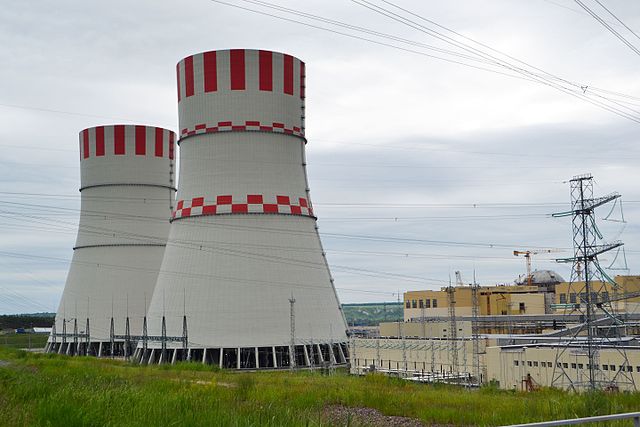Generation III reactors, or Gen III reactors, are a class of nuclear reactors designed to succeed Generation II reactors, incorporating evolutionary improvements in design. These include improved fuel technology, higher thermal efficiency, significantly enhanced safety systems, and standardized designs intended to reduce maintenance and capital costs. They are promoted by the Generation IV International Forum (GIF).
Model of the Toshiba ABWR, which became the first operational Generation III reactor in 1996
EPR core catching room designed to catch the corium in case of a meltdown. Some Generation III reactors include a core catcher in their design.
Kakrapar Atomic Power Station Unit 3 and 4 under construction. India's first Generation III+ reactor
Novovoronezh Nuclear Power Plant II with the first Generation III+ nuclear reactor in the world
Generation IV reactors are nuclear reactor design technologies that are envisioned as successors of generation III reactors. The Generation IV International Forum (GIF) – an international organization that coordinates the development of generation IV reactors – specifically selected six reactor technologies as candidates for generation IV reactors. The designs target improved safety, sustainability, efficiency, and cost. The World Nuclear Association in 2015 suggested that some might enter commercial operation before 2030.
The sustainable fuel-cycle proposed in the 1990s Integral fast reactor concept (color), an animation of the pyroprocessing technology is also available.





